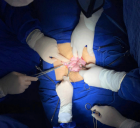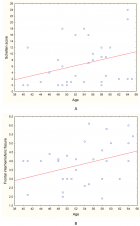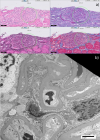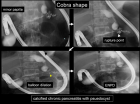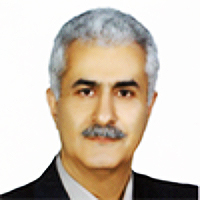Abstract
Research Article
The Dynamics of Eating Behavior Disorders and the Level of General Psychological Adaptation in Bodybuilding and Fitness Athletes
Elena Mihaita*, Georgeta Mitrache, Marius Stoica and Rocsana Manea Bucea Tonis
Published: 30 August, 2023 | Volume 7 - Issue 2 | Pages: 065-089
Knowing the psychological traits and clinically relevant symptoms for the development and maintenance of Eating Behavior Disorders (EDD) in bodybuilding and fitness athletes is a necessity for early intervention and the elimination of stressors that contribute to improving sports performance and quality of life.
The aim of the study: To know the dynamics of EDD and the level of general psychological adaptation in athletes who practice bodybuilding and fitness according to sports gender and age.
By applying the Inventory of Eating Disorders, EDI-III on 30 participants, bodybuilding and fitness practitioners, aged between 19 and 53, of which 21 are male and 9 are female, psychological traits were investigated relevant (low self-esteem, perfectionism, asceticism, fear of maturity, interpersonal, emotional problems, exaggerated control, and others) in order to know the level of distress and the presence of clinically relevant symptoms for the development and maintenance of EDD (the desire to being thin, bulimia, body dissatisfaction)
We concluded that most of the athletes fall within the limits of the threshold values established for the evaluated scales, 30% of the athletes (3 female athletes and 6 male athletes), obtained scores rated above the threshold on at least one of the clinical scales, which means that the risk of EDD is present in some athletes. The average of the investigated psychological scales calculated for the rated scores to establish the level of general psychological adaptation does not exceed the specified threshold for each investigated dimension separately, except for the asceticism, interpersonal problems, and exaggerated control scales. Female athletes have greater psychological balance than male athletes and lower risk of ED than male athletes, important aspects of personality and mental health in psychological training as a screening tool in the process of optimizing the effectiveness of bodybuilding and fitness training.
Read Full Article HTML DOI: 10.29328/journal.jnnd.1001081 Cite this Article Read Full Article PDF
Keywords:
Psychological traits; Psychological scales; Threshold; Bodybuilding; Eating disorders
References
- Horghidan V. Problematica pshimotricității. București: Globus. 2000.
- Golu M. Bazele psihologiei generale.The basics of general psychology. București: Universitară. 2005.
- Pelin F, Radu P, Mitrache G, Alexandra P. Discobolul - Jurnalul de educație fizică, sport și kinetoterapie. Caracteristici mentale ale atletilor de nivel superior. 2020; 59(1):5-14. doi: https://doi.org/10.35189/dpeskj.2020.59.1.1
- Mihăiță E. Study on aspects of bodybuilding and fitness practitioner's motivation and weight training routine. American Journal of Biomedical Science @ Research. 2023; 19(3):77-97. doi:10.34297/AJBSR.2023.19002553
- Harmanci BS, Okray Z. Body Image, Muscle Dysmorphia and Narcissistic Characteristics of Bodybuilder Males in TRNC. Cyprus Turkish Journal of Psychiatry and Psychology. 2021; 3(2):82-90. doi:10.35365/ctjpp.21.2.09
- Cafri G, Thompson JK, Ricciardelli L, McCabe M, Smolak L, Yesalis C. Pursuit of the muscular ideal: Physical and psychological consequences and putative risk factors. Clin Psychol Rev. 2005 Feb;25(2):215-39. doi: 10.1016/j.cpr.2004.09.003. Epub 2004 Dec 30. PMID: 15642647.
- Becoming Competitive Amateur Bodybuilders: Identification of Contributors. Psychology of Men & Masculinity. 2010; 11(2):152-159. doi:10.1037/a0018091
- Cook R, Griffiths M, Pontes H. Personality Factors in Exercise Addiction: A Pilot Study Exploring the Role of Narcissism, Extraversion, and Agreeableness. INTERNATIONAL JOURNAL OF MENTAL HEALTH AND ADDICTION. 2020; 18(1):89-102. doi:10.1007/s11469-018-9939-z
- Macho J, Mudrak J, Slepicka P. Enhancing the Self: Amateur Bodybuilders Making Sense of Experiences With Appearance and Performance-Enhancing Drugs. Front Psychol. 2021 Jun 11;12:648467. doi: 10.3389/fpsyg.2021.648467. PMID: 34177704; PMCID: PMC8232052.
- Bridges T. Gender Capital and Male Bodybuilders. BODY & SOCIETY. 2009; 15(1):83-107. doi:10.1177/1357034X08100148
- Marzano-Parisoli M. The contemporary construction of a perfect body image: Bodybuilding, exercise addiction, and eating disorders. QUEST. 2001; 53(2):216-230.
- Clausen L, Rosenvinge JH, Friborg O, Rokkedal K. Validating the Eating Disorder Inventory-3 (EDI-3): A Comparison Between 561 Female Eating Disorders Patients and 878 Females from the General Population. J Psychopathol Behav Assess. 2011 Mar;33(1):101-110. doi: 10.1007/s10862-010-9207-4. Epub 2010 Oct 19. PMID: 21472023; PMCID: PMC3044826.
- Garner DM, Miclea Ș, Joja O-DA. EDI-3, Inventarul tulburărilor de comportament alimentar - 3 Manula de specialitate. Adaptarea și standardizarea EDI-3 pe populația din România. Cluj-Napoca: S.C.Cognitrom S.R.L. 2010.
- Miclea M, Cotârlea P, Nicule C, Sălajan R. CAS++ COGNITROM ASSESSMENT SYSTEM++. Manual de utilizare a aplicației CAS++ 2017. Cluj-Napoca: ASCR 2017. 2017.
- Phoenix C. Auto-photography in aging studies: Exploring issues of identity construction in mature bodybuilders. JOURNAL OF AGING STUDIES. 2010; 24(3):167-180. doi:10.1016/j.jaging.2008.12.007
- Sawicki K. Bodybuilding as a subcultural lifestyle of peripheral youth. HEALTH RISK & SOCIETY. 2016; 18(5-6): 283-300. doi:10.1080/13698575.2016.1211256
- Bjørnestad J, Kandal Ø, Anderssen N. Vulnerable discipline: experiences of male competitive bodybuilders. J Health Psychol. 2014 Sep;19(9):1174-84. doi: 10.1177/1359105313485485. Epub 2013 May 16. PMID: 23682065.
- de Liz CM, Viana Md, Dominski FH, Andrade A. Physical exercise in gyms: perspectives of the self-determination theory. Iberoamerican journal of exercise and sport psychology. 2018; 13(2):235-243. doi:WOS:000436185800008
- Moreno-Murcia JA, Silva BF, Pardo MPJ, Rodriguez SAC, Hernandez HE. Motivation, frequency, and activity type in physical exercise participants. International journal of medicine and science of physical activities and sports. 2012; 12(48):649-662. doi:WOS:00313271700004
- Ibarzabal F, Tubio J. Personality traits in bodybuilders and relationships with anthropometric variables and sport behavior. Journal of Sports Psychology. 2008; 17(1):85-102. doi:WOS:000257792900006
- Lantyer MB, Pietschmann RE, Maynard Dd. Bodybuilding athletes: development of eating disorders after competitions. RBNE-REVISTA BRASILIERA DE NUTRICAO ESPORTIVA. 2023; 17(102):22-31. doi:WOS:000938847800003
- Chappell AJ, Simper T, Barker ME. Nutritional strategies of high level natural bodybuilders during competition preparation. J Int Soc Sports Nutr. 2018 Jan 15;15:4. doi: 10.1186/s12970-018-0209-z. PMID: 29371857; PMCID: PMC5769537.
- Maier MJ, Haeussinger FB, Hautzinger M, Fallgatter AJ, Ehlis AC. Excessive bodybuilding as pathology? A first neurophysiological classification. World J Biol Psychiatry. 2019 Oct;20(8):626-636. doi: 10.1080/15622975.2017.1395070. Epub 2017 Nov 15. PMID: 29057722.
- Abras H, Erdag D, Buran A. Investigation of the Relationship between Muscle Dysmorphia Disorder, Orthorexia Nervosa, and Motivation in Male Individuals Engaged in Bodybuilding Sports. CYPRUS TURKISH JOURNAL OF PSYCHIATRY AND PSYCHOLOGY. 2023; 4(1):13-22. doi:10.35365/ctjpp.22.1.02
- Whitehead J, Slater G, Wright H, Martin L, O'Connor H, Mitchell L. Disordered eating behaviours in female physique athletes. Eur J Sport Sci. 2020 Oct;20(9):1206-1214. doi: 10.1080/17461391.2019.1698659. Epub 2019 Dec 12. PMID: 31771429.
- Steele IH, Pope HG Jr, Kanayama G. Competitive Bodybuilding: Fitness, Pathology, or Both? Harv Rev Psychiatry. 2019 Jul/Aug;27(4):233-240. doi: 10.1097/HRP.0000000000000211. PMID: 31219882.
- Cerea S, Giraldo M, Caudek C, Bottesi G, Paoli A, Ghisi M. Validation of the Muscle Dysmorphic Disorder Inventory (MDDI) among Italian Women Practicing Bodybuilding and Powerlifting and in Women Practicing Physical Exercise. INTERNATIONAL JOURNAL OF ENVIRONMENTAL RESEARCH AND PUBLIC HEALTH. 2022; 19(15). doi:10.3390/ijerph19159487
- Efthymiou D, Kokokiris L, Mesiari C, Vassilopoulou E. Perceived ideal body weight exacerbates bulimia and dieting in Bodybuilding Athletes. Toxicol Rep. 2021 Oct 11;8:1777-1782. doi: 10.1016/j.toxrep.2021.10.007. PMID: 34712596; PMCID: PMC8528646.
- Money-Taylor E, Dobbin N, Gregg R, Matthews J, Esen O. Differences in attitudes, behaviours, and beliefs towards eating between female bodybuilding athletes and non-athletes, and the implications for eating disorders and disordered eating. SPORT SCIENCE FOR HEALTH. 2022; 67-74. doi:10.1007/s11332-021-00775-2
- Devrim A, Bilgic P, Hongu N. Is There Any Relationship Between Body Image Perception, Eating Disorders, and Muscle Dysmorphic Disorders in Male Bodybuilders? Am J Mens Health. 2018 Sep;12(5):1746-1758. doi: 10.1177/1557988318786868. Epub 2018 Jul 13. PMID: 30003837; PMCID: PMC6142149.
- Suffolk MT, Dovey TM, Goodwin H, Meyer C. Psychobehavioral characteristics of competitive bodybuilders: A longitudinal study. INTERNATIONAL JOURNAL OF SPORT PSYCHOLOGY. 2015; 46(2):117-136. doi:10.7352/IJSP2015.46.117
- Stackeová D, Barešová T, Přibylová B. A pilot study of a modification EAT-26 questionnaire for screening pathological eating behavior in competitive athletes. Front Psychol. 2023 Jun 2;14:1166129. doi: 10.3389/fpsyg.2023.1166129. PMID: 37333604; PMCID: PMC10272717.
- Theodoro PB, Manochio-Pina MG, Junqueira AC, Melo Ad. Muscle dysmorphia and risk factors in bodybuilders. RBNE-REVISTA BRASILIERA DE NUTRICAO ESPORTIVA. 2022; 16(100):287-296. doi:WOS:000886221400007
- Haman L, Lindgren E-C, Prell H. "If it's not Iron it's Iron f*cking biggest Ironman": personal trainers' views on health norms, orthorexia and deviant behaviours. INTERNATIONAL JOURNAL OF QUALITATIVE STUDIES ON HEALTH AND WELL-BEING, 12(Supplement 2). 2017. doi:10.1080/17482631.2017.1364602
- Bompa TO, Haff GG. Periodization.Training theory and methodology. Bucharest: Ad Point Promo. 2014.
- De La Poza E, Jodar L, Alkasadi M. Modelling the propagation of adult male muscle dysmorphia in Spain: economic, emotional and social drivers. APPLIED ECONOMICS. 2015; 47(12):1159-1169. doi:10.1080/00036846.2013.870657
- Gargari BP, Khadem-Haghighian M, Taklifi E, Hamed-Behzad M, Shahraki M. Eating attitudes, self-esteem, and social physique anxiety among Iranian females who participate in fitness programs. JOURNAL OF SPORTS MEDICINE AND PHYSICAL FITNESS. 2010; 79-84. doi:WOS:000278330400012
- Levinson CA, Fewell L, Brosof LC. My Fitness Pal calorie tracker usage in the eating disorders. Eat Behav. 2017 Dec;27:14-16. doi: 10.1016/j.eatbeh.2017.08.003. Epub 2017 Aug 18. PMID: 28843591; PMCID: PMC5700836.
- Mangweth-Matzek B, Decker B, Erschbaumer I, Wurnig V, Kemmler G, Bichler CS, Rupp C. Disordered eating symptoms in Austrian men of different ages in the context of fitness centers. EATING AND WEIGHT DISORDERS-STUDIES ON ANOREXIA BULIMIA. 2022; 27(5):1765-1773. doi:10.1007/s40519-021-01317-y
- Parreño-Madrigal IM, Díez-Fernández A, Martínez-Vizcaíno V, Visier-Alfonso ME, Garrido-Miguel M, Sánchez-López M. Prevalence of Risk of Eating Disorders and its Association with Obesity and Fitness. Int J Sports Med. 2020 Sep;41(10):669-676. doi: 10.1055/a-1152-5064. Epub 2020 Jun 2. PMID: 32485780.
- Predoiu R. Sports psychology and performance makers. Caracal: Hoffman. 2021.
- Selenius S, Birgegård A, Forsén Mantilla E. Preliminary evaluation of the online course "I Care" targeting eating disorder knowledge and attitudes among sports coaches and fitness instructors. J Eat Disord. 2022 Sep 29;10(1):142. doi: 10.1186/s40337-022-00663-1. PMID: 36175946; PMCID: PMC9520860.
- Wons O, Lampe E, Patarinski AG, Schaumberg KB, Juarascio A. Perceived influence of wearable fitness trackers on eating disorder symptoms in a clinical transdiagnostic binge eating and restrictive eating sample. EATING AND WEIGHT DISORDERS-STUDIES ON ANOREXIA BULIMIA. 2022; 3367-3377. doi:10.1007/s40519-022-01466-8
- Computerized Psychological Assessment Platform (CAS++). 2023. https://www.cognitrom.ro/produs/evaluare-psihologica/ https://www.cognitrom.ro/download-pdf/3534/
Figures:

Figure 1

Figure 2

Figure 3

Figure 4

Figure 5

Figure 6

Figure 7

Figure 8

Figure 9

Figure 10
Similar Articles
-
The Dynamics of Eating Behavior Disorders and the Level of General Psychological Adaptation in Bodybuilding and Fitness AthletesElena Mihaita*, Georgeta Mitrache, Marius Stoica, Rocsana Manea Bucea Tonis. The Dynamics of Eating Behavior Disorders and the Level of General Psychological Adaptation in Bodybuilding and Fitness Athletes. . 2023 doi: 10.29328/journal.jnnd.1001081; 7: 065-089
-
Bimatoprost Ophthalmic Solution (BOS) 0.3 mg w/v for 1 Open Trial of Long-term Preventive Therapy of Migraine in 3 patients with Pathophysiologic Shift from Brain to EyeVinod Kumar Gupta*. Bimatoprost Ophthalmic Solution (BOS) 0.3 mg w/v for 1 Open Trial of Long-term Preventive Therapy of Migraine in 3 patients with Pathophysiologic Shift from Brain to Eye. . -0001 doi: 10.29328/journal.jnnd.1001087; 7: 134-154
-
Bimatoprost Ophthalmic Solution (BOS) 0.3 mg w/v for 1 Open Trial of Long-term Preventive Therapy of Migraine in 3 patients with Pathophysiologic Shift from Brain to EyeVinod Kumar Gupta*. Bimatoprost Ophthalmic Solution (BOS) 0.3 mg w/v for 1 Open Trial of Long-term Preventive Therapy of Migraine in 3 patients with Pathophysiologic Shift from Brain to Eye. . 2023 doi: 10.29328/journal.jnnd.1001087; 7: 134-054
Recently Viewed
-
Cystoid Macular Oedema Secondary to Bimatoprost in a Patient with Primary Open Angle GlaucomaKonstantinos Kyratzoglou*,Katie Morton. Cystoid Macular Oedema Secondary to Bimatoprost in a Patient with Primary Open Angle Glaucoma. Int J Clin Exp Ophthalmol. 2025: doi: 10.29328/journal.ijceo.1001059; 9: 001-003
-
Metastatic Brain Melanoma: A Rare Case with Review of LiteratureNeha Singh,Gaurav Raj,Akshay Kumar,Deepak Kumar Singh,Shivansh Dixit,Kaustubh Gupta*. Metastatic Brain Melanoma: A Rare Case with Review of Literature. J Radiol Oncol. 2025: doi: ; 9: 050-053
-
Depression as a civilization-deformed adaptation and defence mechanismBohdan Wasilewski*,Olha Yourtsenyuk,Eugene Egan. Depression as a civilization-deformed adaptation and defence mechanism. Insights Depress Anxiety. 2020: doi: 10.29328/journal.ida.1001013; 4: 008-011
-
Drinking-water Quality Assessment in Selective Schools from the Mount LebanonWalaa Diab, Mona Farhat, Marwa Rammal, Chaden Moussa Haidar*, Ali Yaacoub, Alaa Hamzeh. Drinking-water Quality Assessment in Selective Schools from the Mount Lebanon. Ann Civil Environ Eng. 2024: doi: 10.29328/journal.acee.1001061; 8: 018-024
-
Rapid Microbial Growth in Reusable Drinking Water BottlesQishan Liu*,Hongjun Liu. Rapid Microbial Growth in Reusable Drinking Water Bottles. Ann Civil Environ Eng. 2017: doi: 10.29328/journal.acee.1001007; 1: 055-062
Most Viewed
-
Evaluation of Biostimulants Based on Recovered Protein Hydrolysates from Animal By-products as Plant Growth EnhancersH Pérez-Aguilar*, M Lacruz-Asaro, F Arán-Ais. Evaluation of Biostimulants Based on Recovered Protein Hydrolysates from Animal By-products as Plant Growth Enhancers. J Plant Sci Phytopathol. 2023 doi: 10.29328/journal.jpsp.1001104; 7: 042-047
-
Sinonasal Myxoma Extending into the Orbit in a 4-Year Old: A Case PresentationJulian A Purrinos*, Ramzi Younis. Sinonasal Myxoma Extending into the Orbit in a 4-Year Old: A Case Presentation. Arch Case Rep. 2024 doi: 10.29328/journal.acr.1001099; 8: 075-077
-
Feasibility study of magnetic sensing for detecting single-neuron action potentialsDenis Tonini,Kai Wu,Renata Saha,Jian-Ping Wang*. Feasibility study of magnetic sensing for detecting single-neuron action potentials. Ann Biomed Sci Eng. 2022 doi: 10.29328/journal.abse.1001018; 6: 019-029
-
Pediatric Dysgerminoma: Unveiling a Rare Ovarian TumorFaten Limaiem*, Khalil Saffar, Ahmed Halouani. Pediatric Dysgerminoma: Unveiling a Rare Ovarian Tumor. Arch Case Rep. 2024 doi: 10.29328/journal.acr.1001087; 8: 010-013
-
Physical activity can change the physiological and psychological circumstances during COVID-19 pandemic: A narrative reviewKhashayar Maroufi*. Physical activity can change the physiological and psychological circumstances during COVID-19 pandemic: A narrative review. J Sports Med Ther. 2021 doi: 10.29328/journal.jsmt.1001051; 6: 001-007

HSPI: We're glad you're here. Please click "create a new Query" if you are a new visitor to our website and need further information from us.
If you are already a member of our network and need to keep track of any developments regarding a question you have already submitted, click "take me to my Query."






